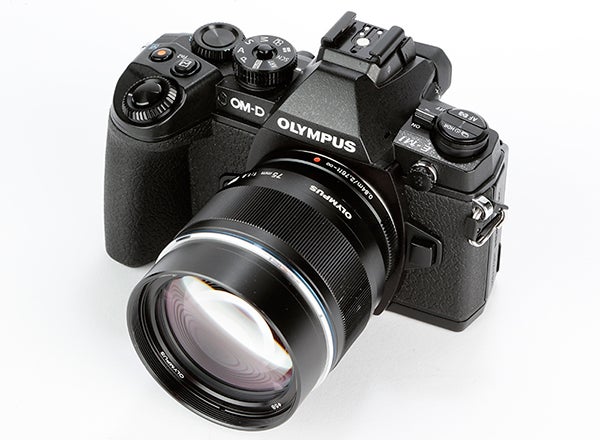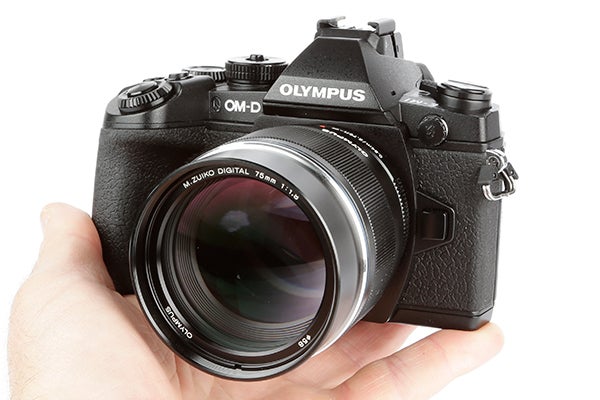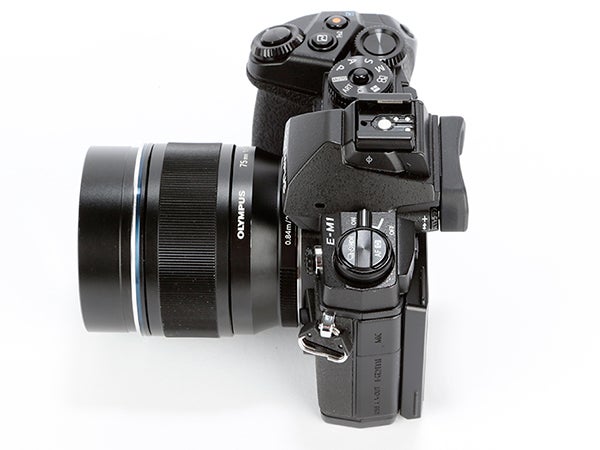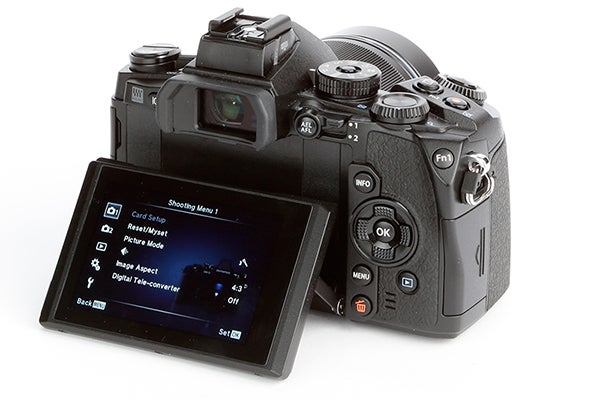Olympus OM-D E-M1 Review
Olympus OM-D E-M1
One of best cameras of any type currently available

Sections
- Page 1 Olympus OM-D E-M1 Review
- Page 2 Design and Peformance Review
- Page 3 Image Quality and Verdict Review
Verdict
Pros
- Superb electronic viewfinder
- Responsive AF system
- Good image quality
- Sturdy build
Cons
- JPEG files somewhat over-processed
Key Specifications
- 16.3MP Micro Four Thirds Live MOS sensor; 3-inch, 1,037k-dot tiltable LCD touch panel; 81-point AF system; ISO 200 – 25,600; Mini flashgun supplied with camera
What is the Olympus OM-D E-M1?
The Olympus OM-D E-M5 was one of the most popular cameras of last year, owing to the combination of an impressive specification, attractive retro looks and excellent image quality.
The E-M1 looks to pick up where the E-M5 left off. Furthermore, it sits above the E-M5 in the manufacturer’s line-up, and as a result it offers a specification more in line with its previous range of DSLRs – headed by the E-5 – yet still in a CSC body.
The question, therefore, is does it manage to combine the best of a DSLR and CSC in an attractive body?
SEE ALSO: Best Cheap Compact System Cameras under £500

Olympus OM-D E-M1: Features
As the OM-D E-M1 is due to sit above the E-M5 at the top of Olympus’s CSC range, you’d expect there to be a raft of improvements, and on the whole that’s certainly the case.
Foremost among these new features is implementation of a new type of AF system. The system incorporates an on-sensor phase-detect AF system that facilitates a hybrid AF set-up, or the DUAL FAST AF system according to Olympus.
The on-sensor phase-detect is combined with a contrast-detect system to offer improved AF performance on the whole. The DUAL FAST AF system also promises improved performance when using standard Four Thirds lenses with a lens adapter.
Previously, attaching Four Thirds lenses meant that you would lose the camera’s continuous and tracking focus modes, and general AF performance would take a noticeable dip. However, the new system enables both those modes and promises to retain the impressive general AF performance seen with Micro Four Thirds optics.

The presence of on-sensor phase-detect technology is the not only way in which the Olympus OM-D E-M1’s sensor is different from the E-M5’s. The 16.3MP chip also sees the removal of the low pass filter in much the same way as Nikon’s recent D7100 and the Pentax K-5 IIs.
The idea behind the removal of the low pass filter is to ensure sharper images than previously seen on the OM-D E-M5, although there is the risk of increased moiré issues when shooting uniformed fine detail.
This is obviously an issue Olympus is aware of, as the model’s new TruePic VII image processor offers a dedicated Fine Detail Technology II feature that should eliminate this threat, while also looking to remove chromatic aberration as well.

Another area of improvement is the E-M1’s electronic viewfinder. While that on the E-M5 featured an entirely respectable 1.44-million dot resolution, the resolution of the E-M1’s EVF jumps to some 2.36-million dots.
This resolution is identical to the optional VF-4 external EVF, and as such you’d have to think that it’s the same EVF unit employed. The EVF also features dioptre adjustment and a built-in eye sensor, while the viewfinder offers a 100% field of view as you’d expect.
The E-M1’s LCD screen is another area of improvement, with a resolution boosted to 1.04-million dots up from 604,000 dots previous, and now offering full touchscreen capabilities while maintaining the vari-angle capabilities.
Much like the recent E-P5, the E-M1 now offers full wireless connectivity, allowing for the wireless transfer of images between the camera and a compatible smartphone or tablet, as well as wireless control of the camera in the field.

